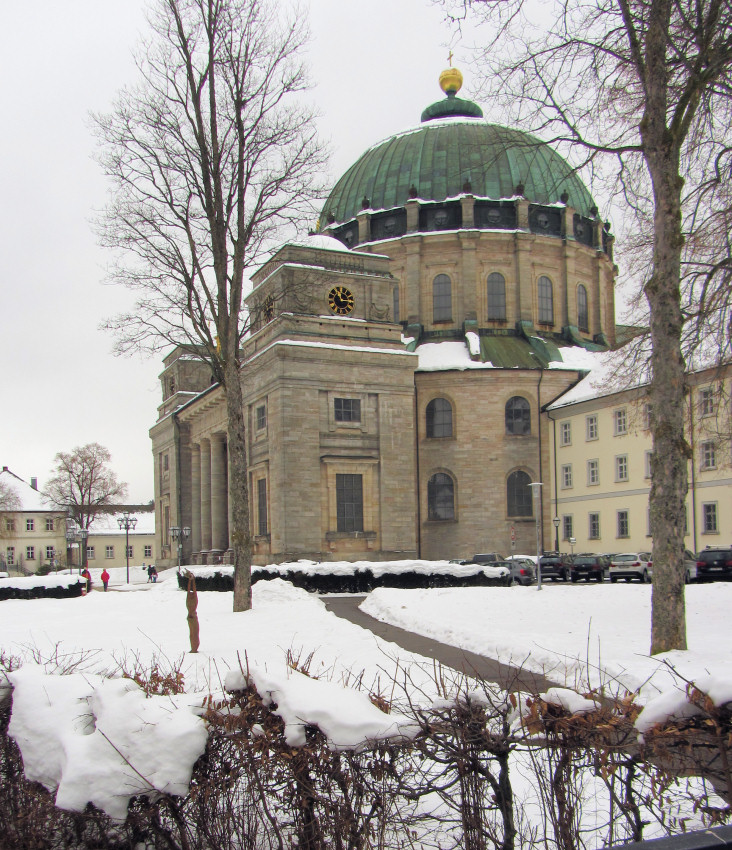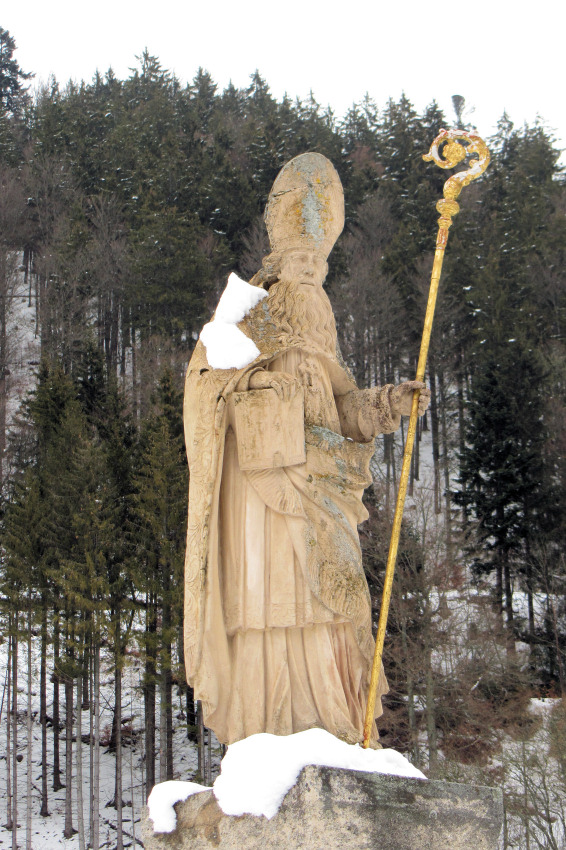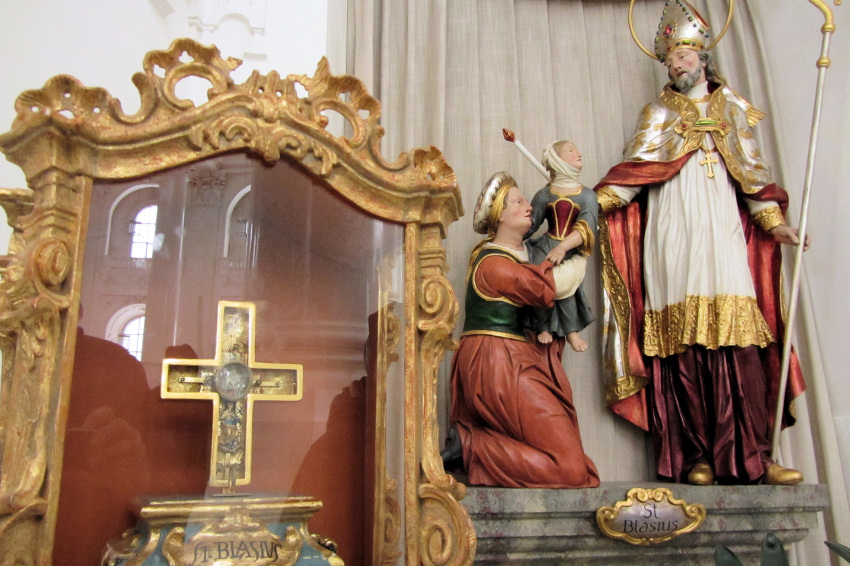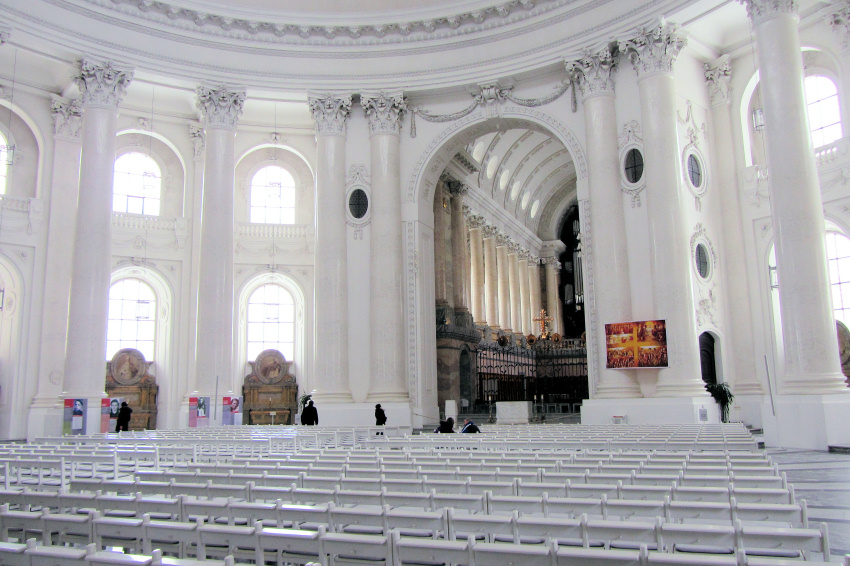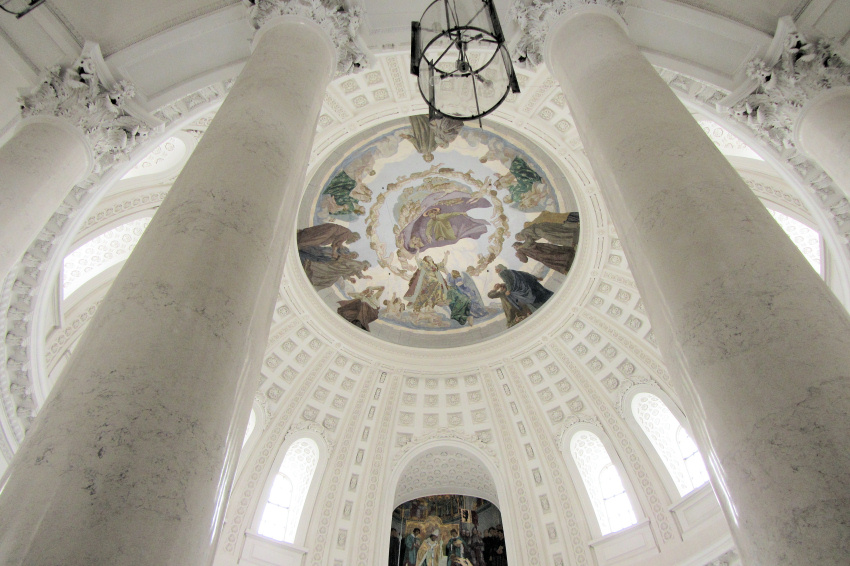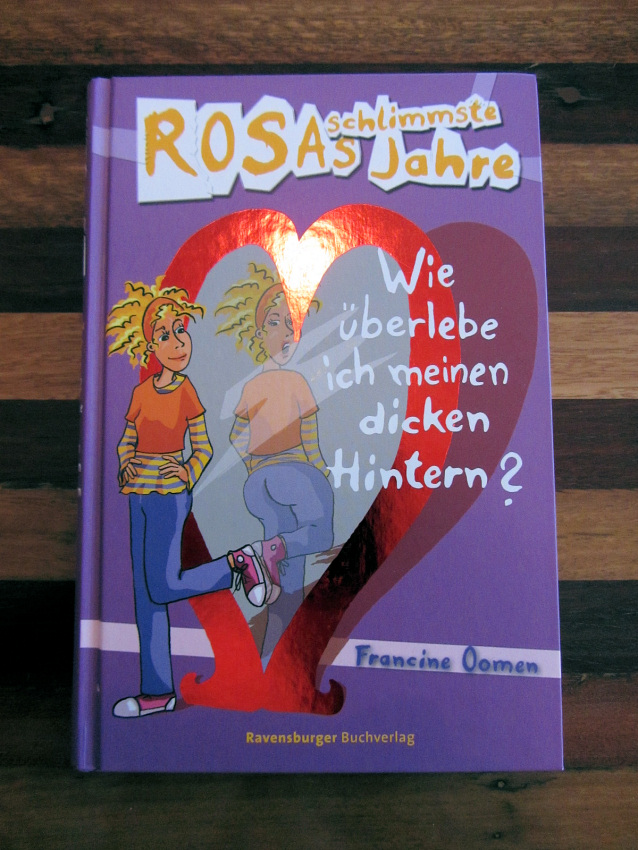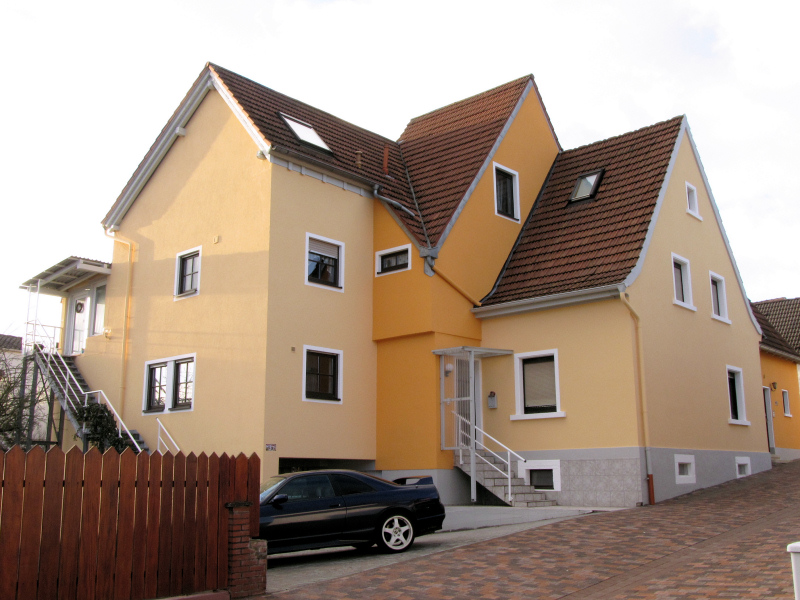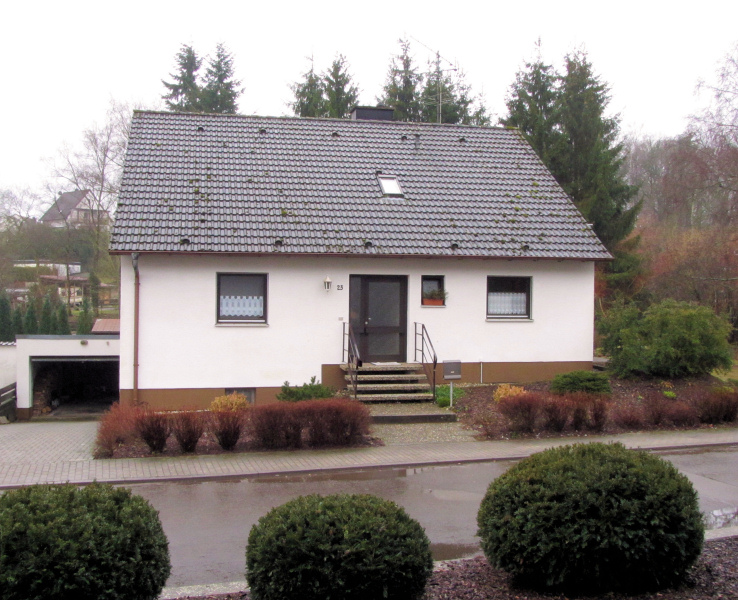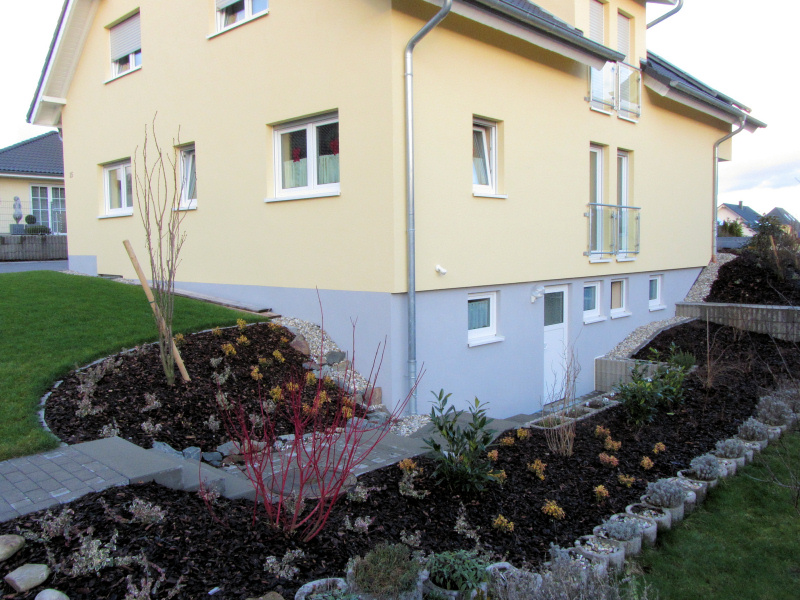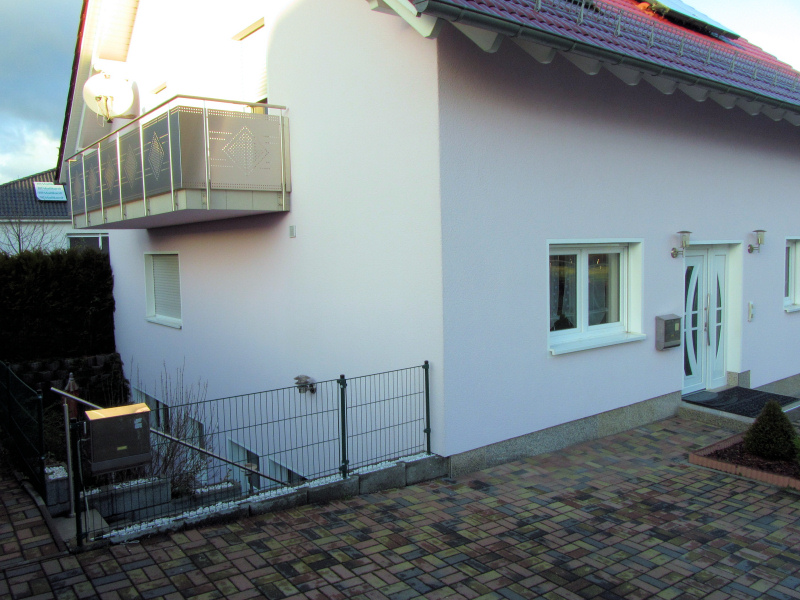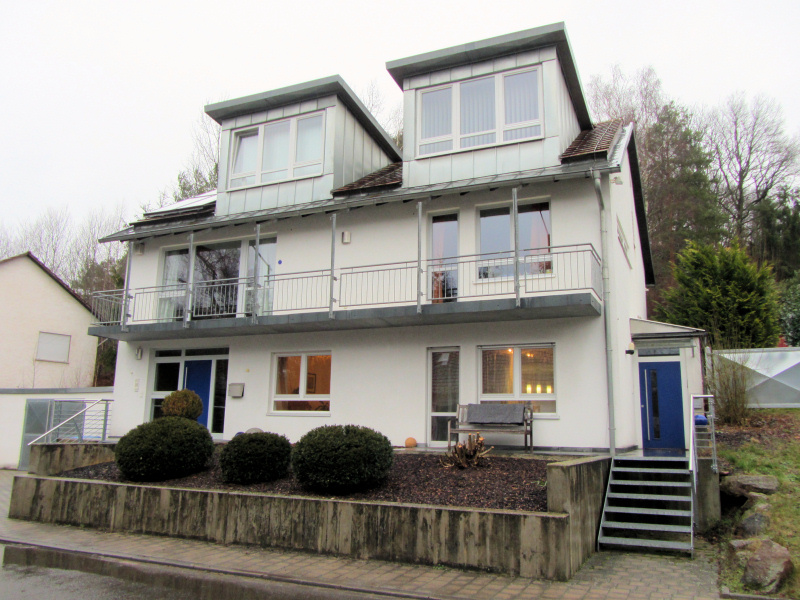
When I was a kid back in Texas, my brother Anthony used to call out, “Our feet are the same!” whenever he was leaving. This was, of course, a childish joke on the German phrase, “Auf Wiedersehen!” Being an ignorant little pre-adolescent, I thought it was hysterical and highly sophisticated. (Okay, I’ll admit it: My brother still says this, and I still laugh.)
The first few weeks I was in Germany, I was puzzled by the roadside signs that read, “Auf Wiedersehen in [our town]!” “Goodbye IN”–shouldn’t it be “Goodbye TO”? But Auf Wiedersehen doesn’t mean goodbye. It means see you later. “See you later in our town!” That’s a much more hopeful thing to say.
I’ve kept this blog for five months, since the week after I arrived in Rodenbach, Germany. Joe and I go back to Texas in a couple of weeks, so I’m stopping the blog for now. But we expect to be back in Europe by summertime, so I’m not going to say goodbye. I’m going to say, “See you later in Rodenbach!” And I’ll start up the blog when I get back.
The last thing I’m going to do is show you around the apartment that’s been our home here. If you’re lucky, you may get to call it home too. It’s a TLF (temporary living facility) rented by the week or month, and it’s the perfect commute to Ramstein Air Base, Vogelweh, or Kaiserslautern. The address is Hübelbrunnenstrasse 18, and the Housing Office can put you in touch with our landlords, Rainer and Heidi Müller.
The photo above shows the whole house. Our apartment, with the two sets of lighted windows, takes up most of the ground floor. Our landlords’ front door, to the left, opens onto an entrance hall and stairs, and they live on the two floors above us.

Here’s a closer view of our apartment: the bedroom is on the left, and the living room is on the right. The steps lead to our entrance hall/mudroom.

This is a look at that entrance hall, which holds all our coats and some of our shoes. And beer! I keep it closed off to save on heating, so it’s the perfect temperature to store Joe’s prized Belgian beer–at least in the wintertime.
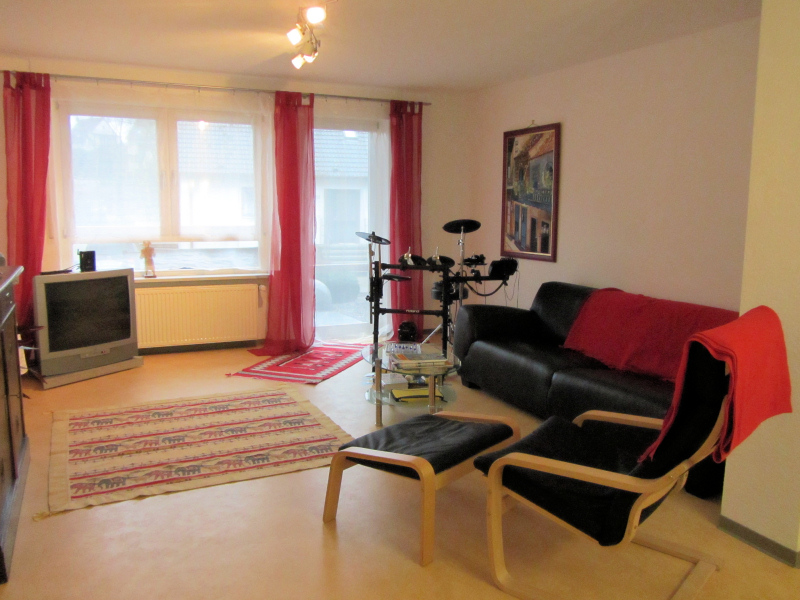
This is our living room. I’ve been so grateful that these windows face south. At this latitude, that means they bring in every available ray of light. Joe’s electronic drums are in the corner. He beats on his drums to alleviate stress.
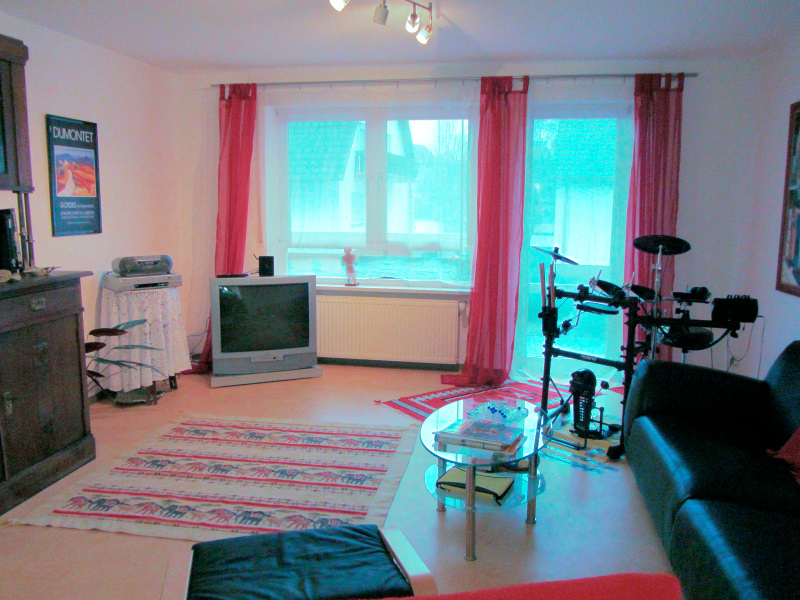
Here’s another view of the living room. My printer lives on the big cabinet to the left, and my files and papers are inside it. The apartment has its own wireless network, which has given us the Internet, enabled me to use VOIP calling, and kept our cell phone costs low.
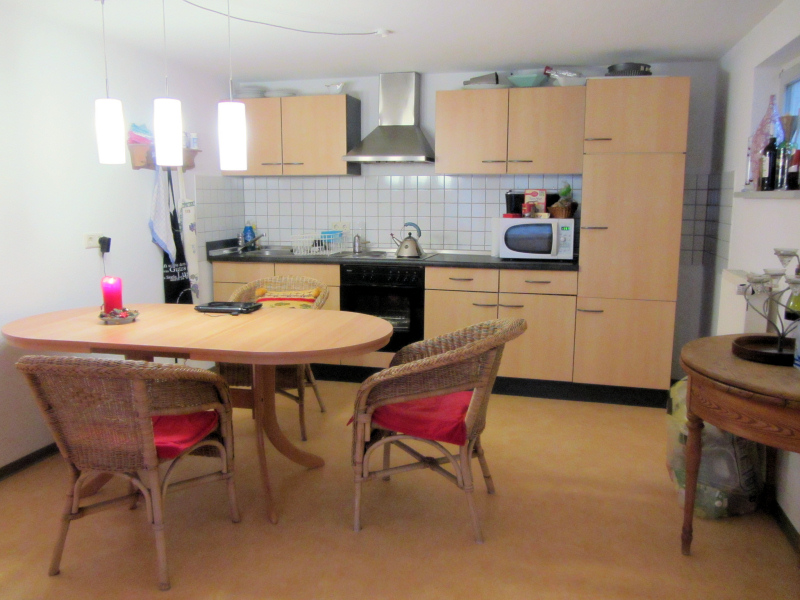
Here’s the view from the living room into the kitchen. What a great little kitchen! I’ve cooked everything from chickens to pies there. The table is where I do all my writing–with the teapot within easy reach. That wonderful little espresso maker sitting on the back of the stove may “accidentally” end up in our luggage…
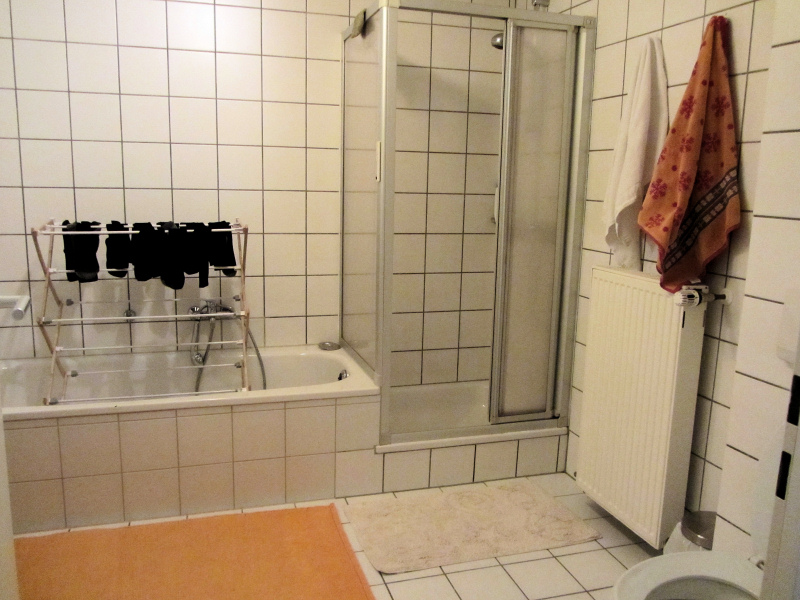
The bathroom. The washing machine is behind the door. A dryer is arriving next week.
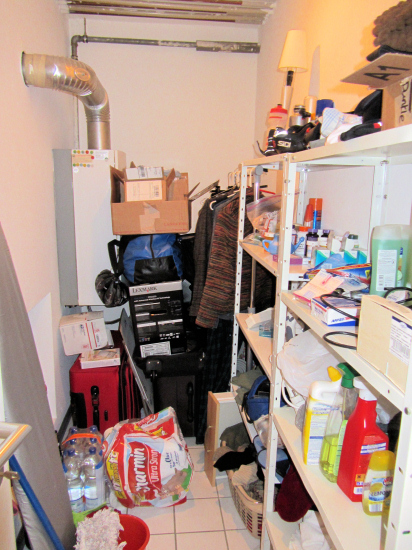
The storage room next to the bathroom was almost empty when we got here!
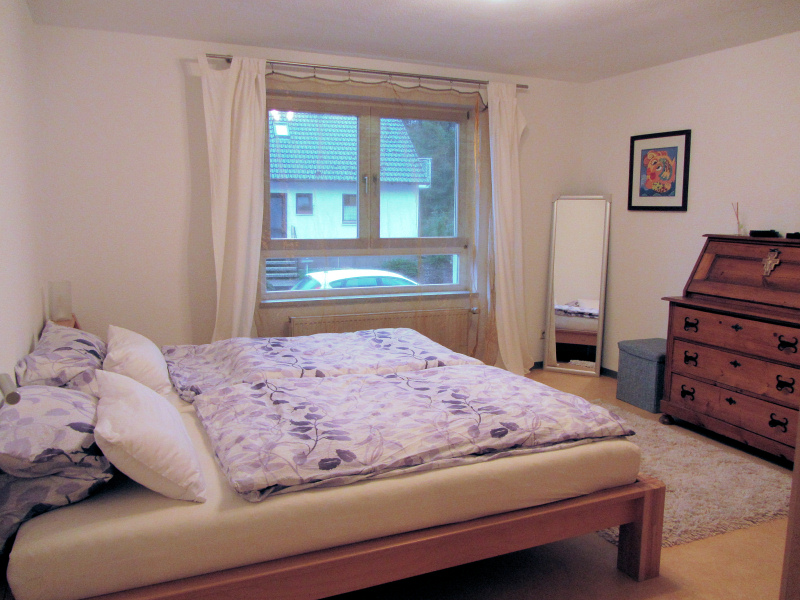
I love the bedroom. It’s very cute.
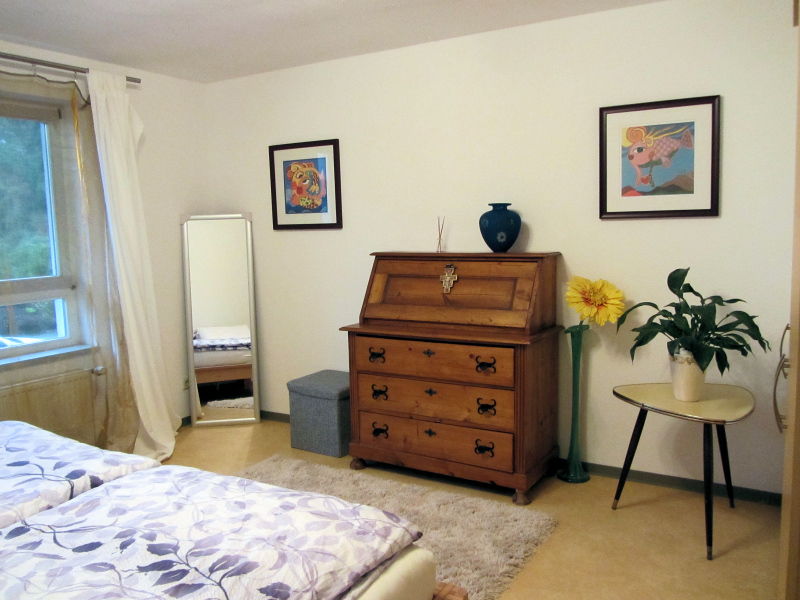
Another view of the bedroom. I brought the San Damiano crucifix with me that I’ve had since I was a child.
I’m going to miss this apartment. The whole time we’ve been here, I haven’t once felt cramped or confined. In fact, Joe and I have loved its cozy atmosphere. I can be writing at the table while Joe lies on the couch and surfs the web. At home, we’d be in different rooms. Here, we’re together. It’s made us rethink a lot of things about what we want in a home.
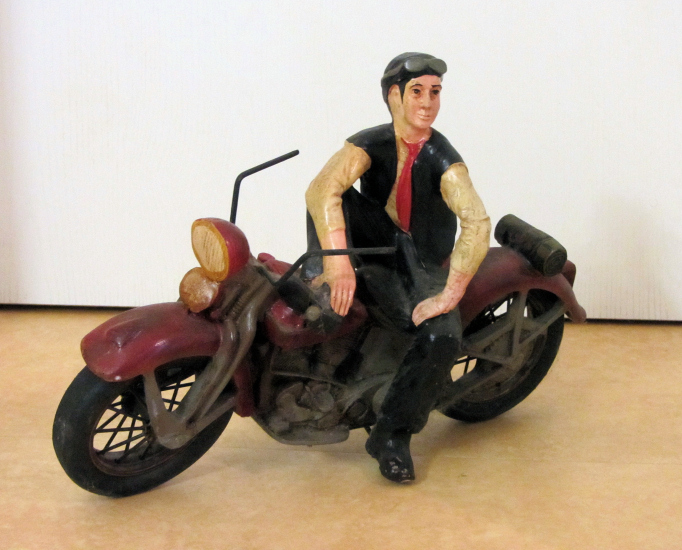
But I think I’ll miss you most of all, Brando.
To read my latest blog posts, please click on the “Green and Pleasant Land” logo at the top of this page. Photos taken in January, 2012, in Rodenbach, Germany. Text and photos copyright Clare B. Dunkle.


